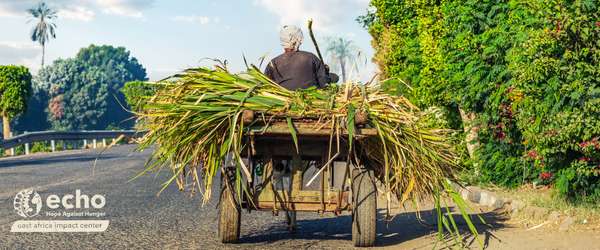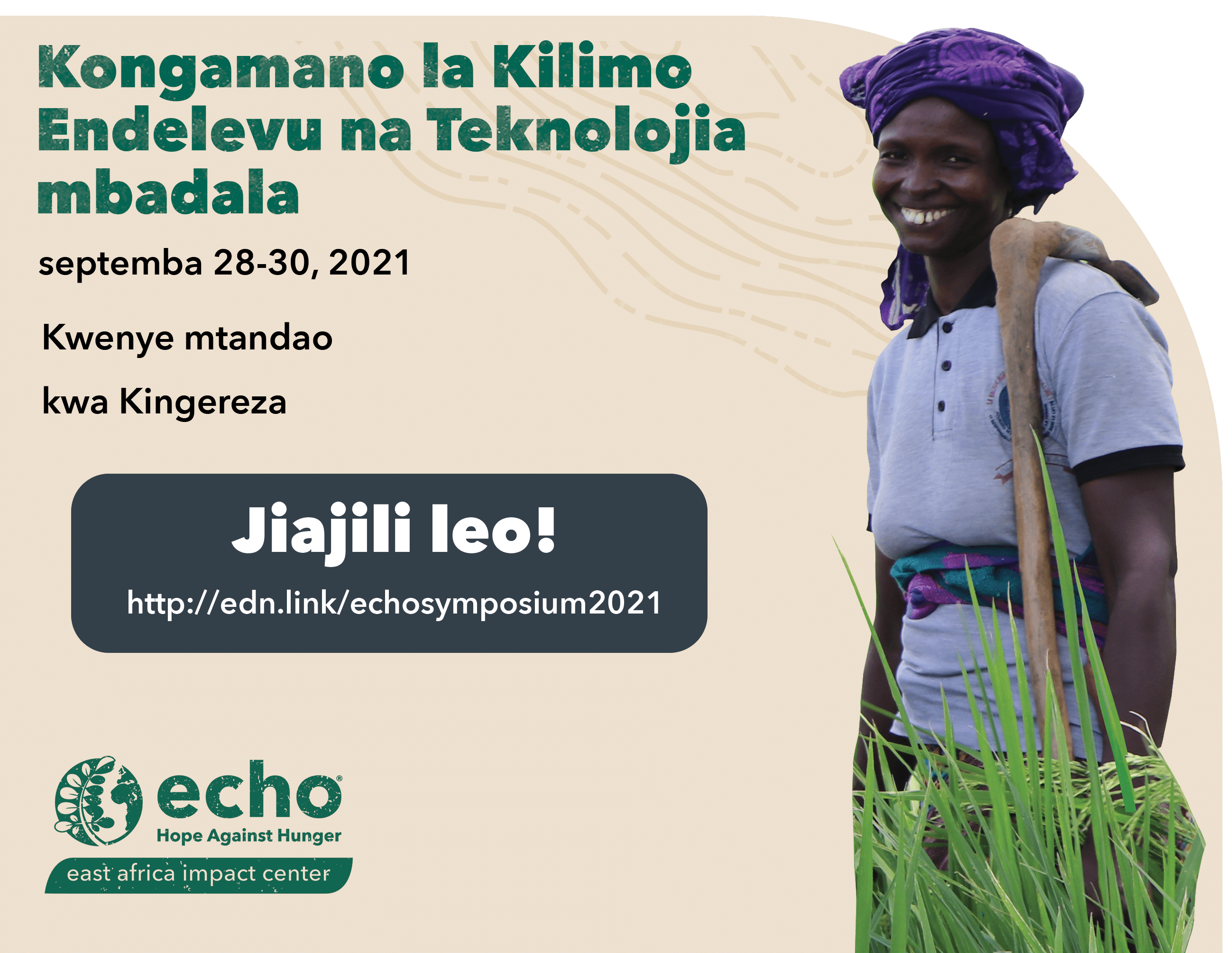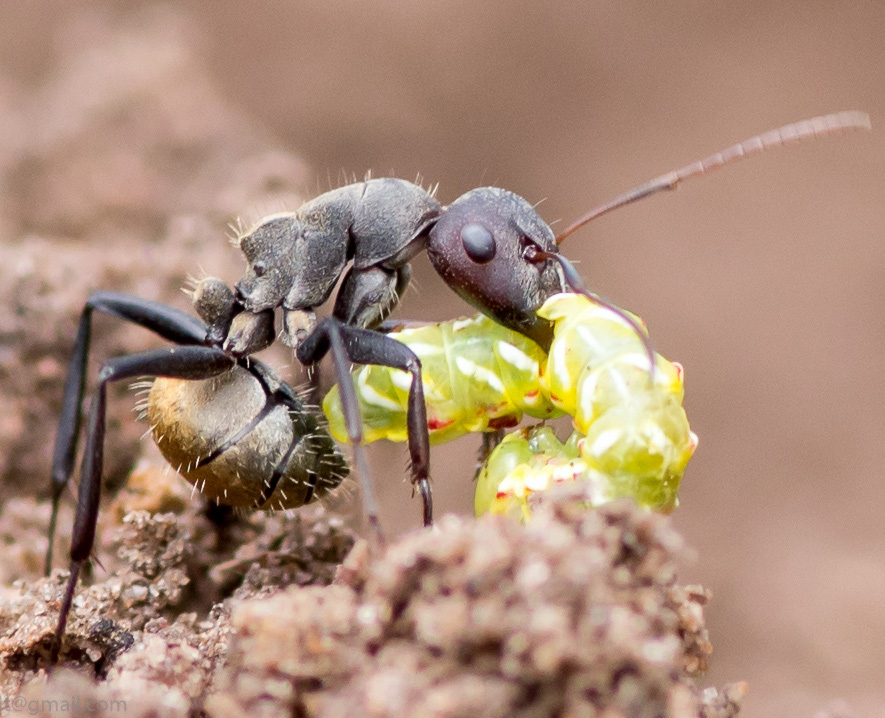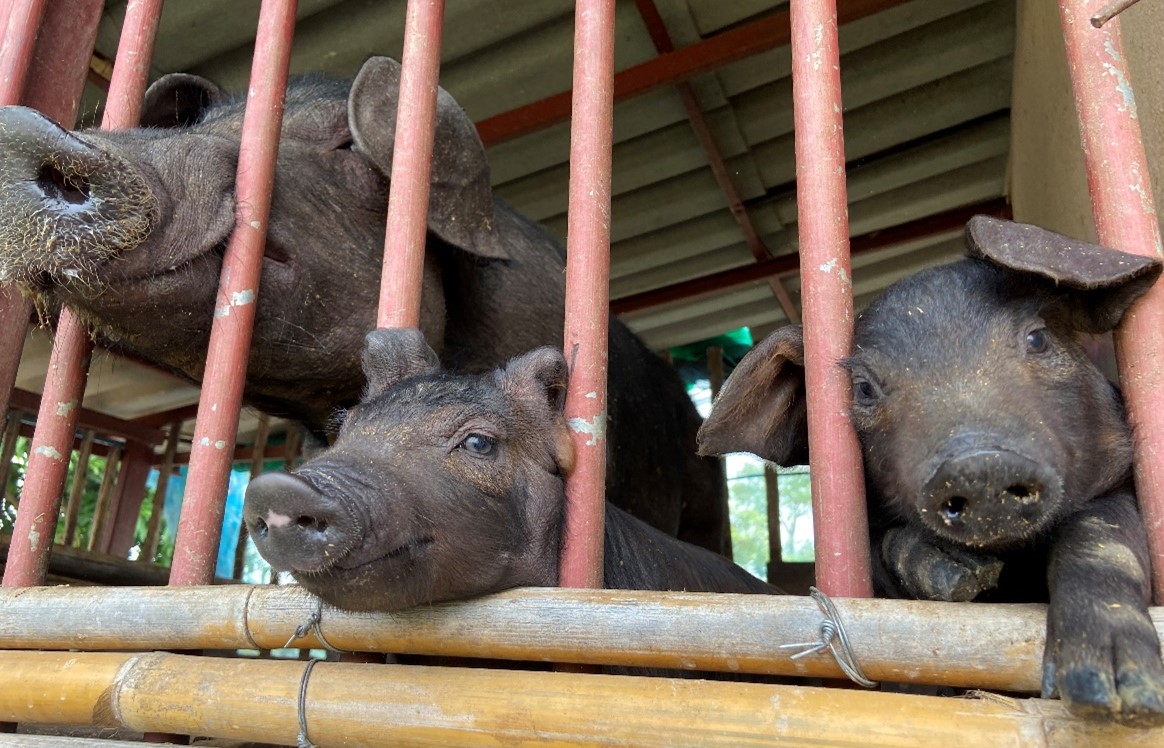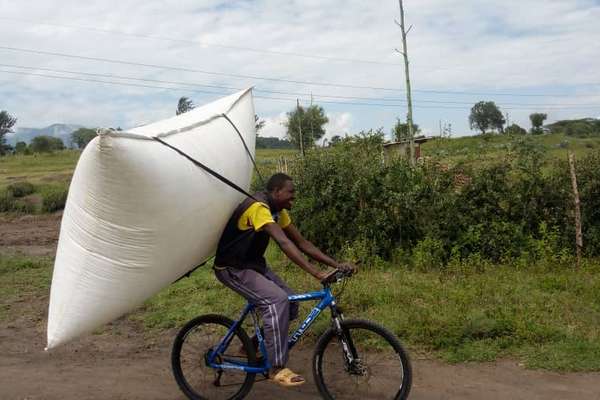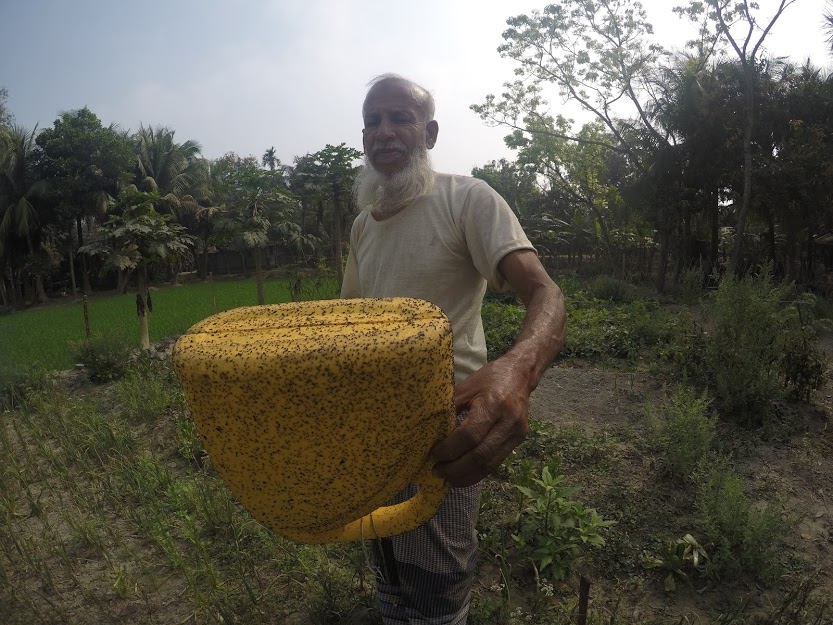ECHOcommunity Updates
ECHO East Africa Virtual Symposium 2021-09-14
Jisajili sasa kwa ajili ya Kongamano la ECHO Afrika Mashariki 2021-08-17
Kongamano la Kilimo Endelevu na Teknolojia mbadala
septemba 28-30 2021
Kwenye mtandao
EDN #152 Now Available 2021-07-22
In this issue:
- Insect Pest Management: Options for Controlling Pest Populations
- From ECHO's Seed Bank: Everglades (Wild) Tomato
- Echoes from our Network: Acacia angustissima Farming Improvement Experience
- Books, Websites, and Other Resources: Soy Kit as an Appropriate Technology for Women Entrepreneurs - A Review
Insect Pest Management: Options for Controlling Pest Populations
Stacy Swartz
Excerpt:
Mechanical interventions for pest control are generally categorized as passive or active. Passive options include films, dusts, oils, soaps, and traps. Films such as kaolin clay can deter insects from landing on plants and/or deter feeding behaviors, but such films need to be reapplied as the plant generates new growth. Dusts such as diatomaceous earth can be placed around the base of plants to keep crawling pests from accessing the plant. Dusts can also be placed on the leaves as a feeding deterrent. Oils and soaps that kill pests are physical controls because their effect is short-term, and they act physically on the pest by smothering them or breaking down sensitive exterior tissues. Oils and soaps must contact pests and are most effective against soft-bellied insects such as aphids, mealybugs, whiteflies, spider mites, and scales. Repeated application is often required to control a population because oils and soaps are most effective at controlling young individuals.
EDN #152 Now Available 2021-07-06
In this issue:
- Insect Pest Management: Options for Controlling Pest Populations
- From ECHO's Seed Bank: Everglades (Wild) Tomato
- Echoes from our Network: Acacia angustissima Farming Improvement Experience
- Books, Websites, and Other Resources: Soy Kit as an Appropriate Technology for Women Entrepreneurs - A Review
Insect Pest Management: Options for Controlling Pest Populations
Stacy Swartz
Excerpt:
Mechanical interventions for pest control are generally categorized as passive or active. Passive options include films, dusts, oils, soaps, and traps. Films such as kaolin clay can deter insects from landing on plants and/or deter feeding behaviors, but such films need to be reapplied as the plant generates new growth. Dusts such as diatomaceous earth can be placed around the base of plants to keep crawling pests from accessing the plant. Dusts can also be placed on the leaves as a feeding deterrent. Oils and soaps that kill pests are physical controls because their effect is short-term, and they act physically on the pest by smothering them or breaking down sensitive exterior tissues. Oils and soaps must contact pests and are most effective against soft-bellied insects such as aphids, mealybugs, whiteflies, spider mites, and scales. Repeated application is often required to control a population because oils and soaps are most effective at controlling young individuals.
Asia Note #46 Now Available 2021-06-14
Featured in this AN
-
African Swine Fever Virus: Overview and Prevention on the Small Farm
-
[Editor’s Note: For questions, comments, or personal experience on this topic visit ECHOcommunity Conversations: African Swine Fever Virus]
-
-
[Example] Small Farm Biosecurity Plan for the Prevention of African Swine Fever
-
I Suspect ASFV on my Farm: What Steps Should I Take?
-
ECHOcommunity Conversations: Find Practical Answers from a Global Network of Agriculturalists
East Africa Note 7 Now Available 2021-04-21
In this issue:
- Families Benefited with Dairy Goats Project
- A Research Project: Packed Biogas in Bags
- Green Manure/ Cover Crops: jack bean
Packed Biogas in Bags: a research project
Harold Msanya
Excerpt:
Evelyn Mguo’s family is a consumer of bagged biogas who participated in phase one of the research project –‘Peer to peer’, a business model to test the viability of retailing methane gas in portable bags, from the farm gate of a biogas digester owner for distribution/sale to a neighbor. Evelyn says,
Both charcoal and firewood are difficult to access during the rainy season. I rarely use charcoal and firewood to cook local foods such as Makukuru and Ndizi. I grew up in a family that used firewood as the only source of energy and hence I used to believe that certain local foods taste better if they are cooked using firewood. I have now used the bagged biogas for three weeks and in my opinion it is a good option. I have managed to cook all types of foods that I used to cook using LPG. One (1m³) bag lasts 3 to 4 days and if it can be obtained for Tsh 2,000 per bag, it means I will cut down the cost used for LPG and other sources by almost 50%. My only request is for the project team think about how to package it in larger quantities so that it can last longer for at least seven days or more.
Announcing the ECHO East Africa Symposium on Sustainable Agriculture and Appropriate Technology 2021-04-14
28th-30th September 2021
You are cordially invited to join us for the 6th ECHO East Africa Biennial Symposium on Sustainable Agriculture and Appropriate Technologies 2021. We hope that you will make time to gather online with us at this very important and effective event for learning, information sharing, and networking for those working and serving in the East Africa Region. Participants are encouraged to register online for a $20 registration fee and that we welcome donations from good-willed individuals to help those who cannot pay this fee.
EDN #151 Now Available 2021-04-07
In this issue:
- Insect Pest Management: Options for Monitoring Pest Populations
- From ECHO's Seed Bank: Apios americana
- Echoes from our Network: Subscribe to ECHO Asia Notes!
- Books, Websites, and Other Resources: Review of Agroforestry Design ToolTM
Insect Pest Management
Annie D. and Stacy Swartz
Excerpt:
You can accomplish active sampling in a variety of ways. Sweep netting is one way to estimate an insect population throughout an entire field. To construct a basic sweep net from local materials, take a light-colored cloth sack, add a firm wire ring around the opening (30 to 38 cm diameter), and attach it to a stick or pole. Sweep nets work best for low-lying crops such as rice and other small grains, or non-vining beans before they flower and fruit—plants that are tough enough to handle the damage without losing fruit or too much leaf mass. Sweep nets also work best for insects that dislodge easily from the plants.
NEW Technical Note # 97 Small-Scale Nursery Management 2021-03-30
Cultivating plants, sharing seeds and cuttings with neighbors, and seeking better crop varieties are as old as agriculture. We use the word “nursery” for places where we care for and nurture things that are precious and vulnerable, like children and plants. Creating habitats to grow healthy seedlings is an integral part of the farming cycle, an important contribution to a thriving community, and both a rewarding and challenging business opportunity.
A nursery can be as small as a farmer’s seedbed for the immediate planting of a single crop, or as large as a complex business with hundreds of species and varieties for sale to the public. This Technical Note describes important aspects of planning and running a small nursery to supply trees and other perennial plants for personal or community use. Content is targeted towards agricultural practitioners working with small-scale farmers in tropical and subtropical climates. Included in the document are comments and insights from people with extensive experience in operating tree nurseries in parts of Central Africa (Roy Danforth), Madagascar (Dan Turk), Guatemala (Dwight Carter), and Haiti/Nicaragua/Indonesia (Rafael Flores).
